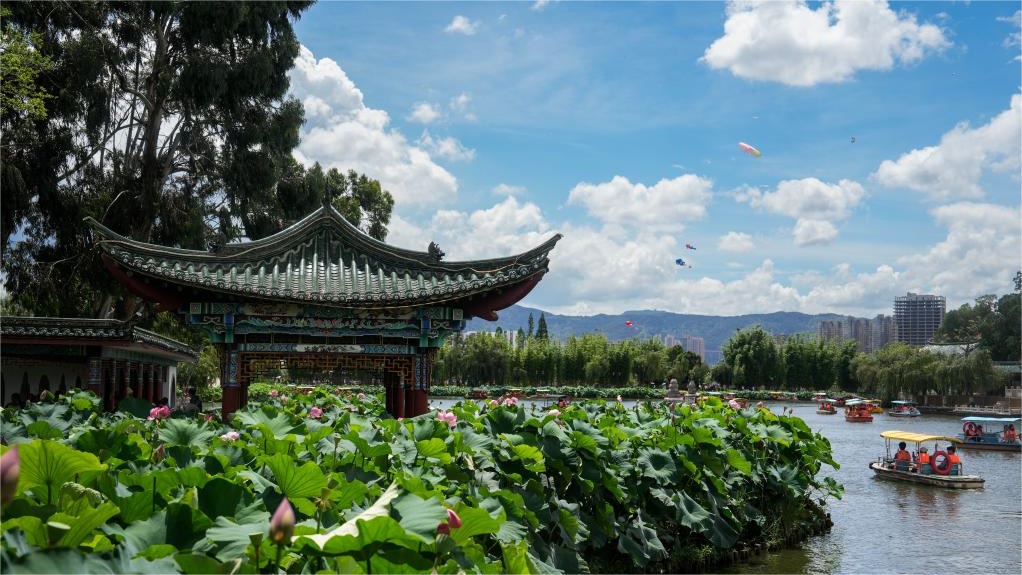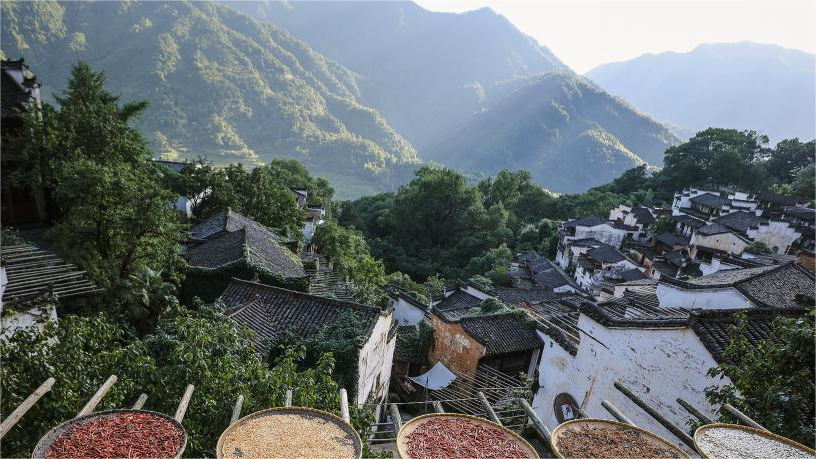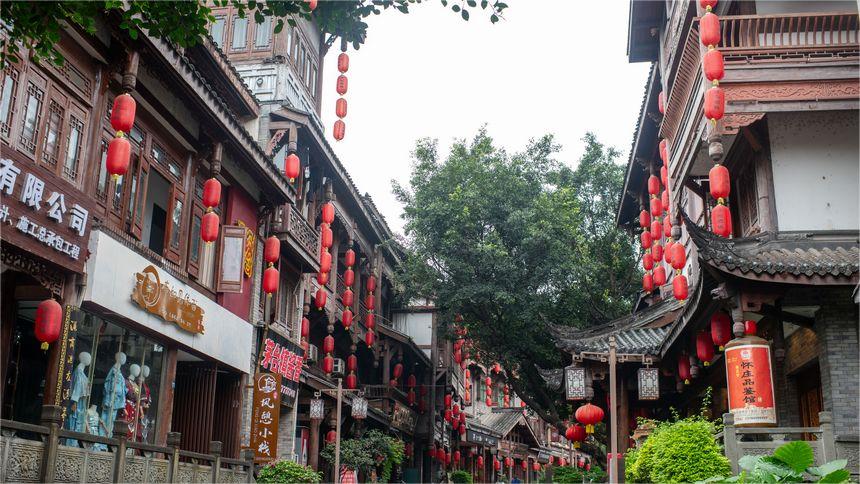Songhua stone in NE China's Jilin embraces new vitality
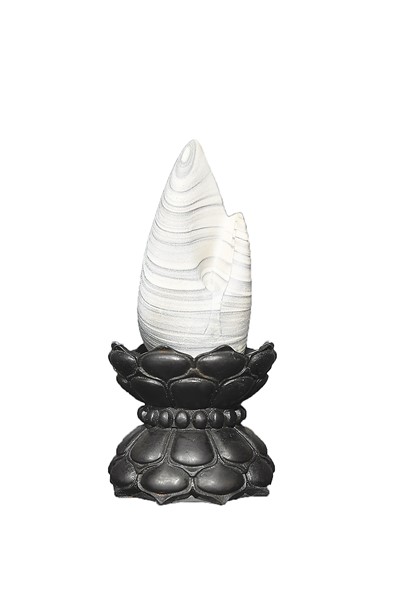
Photo shows a Songhua stone ornament. (People's Daily Online/Li Yang)
Cultural and creative works made of Songhua stone from Jiangyuan district, Baishan city, northeast China's Jilin Province, drew considerable attention from both domestic and international guests at the 20th China (Shenzhen) International Cultural Industries Fair, which kicked off in late May this year.
Songhua stone was carved into ornaments for tribal leaders in the Liao and Jin dynasties (907-1234), and gained imperial favor as the material for prized inkstones over 300 years ago. Today, Songhua stone, which stands as a symbol of Jilin's cultural heritage and tourist souvenirs, is glowing with new vitality.

Guests select Songhua stone crafts at the 20th China (Shenzhen) International Cultural Industries Fair. (Photo courtesy of the publicity department of the Communist Party of China Jiangyuan district committee)
Songhua stone boasts jade-like hardness and vibrant colors, making it ideal for inkstones and crafts. Jiangyuan district, known as the "hometown of China's Songhua stone," is the stone’s main production area.
Wang Qiang, an inheritor of the intangible cultural heritage of Songhua inkstone carving techniques, often showcases his craft in his studio in the district. With over 20 years of experience, he has revitalized traditional techniques through innovation, incorporating elements of Chinese literati painting and calligraphy into his Songhua inkstones.

Foreign visitors experience Songhua stone chimes at the 20th China (Shenzhen) International Cultural Industries Fair. (Photo courtesy of the publicity department of the Communist Party of China Jiangyuan district committee)
Wang not only takes part in national competitions to promote Songhua stone across China but also trains carving artisans and gives lectures at schools. "I hope my artworks will let more people know and fall in love with Songhua stone, so that the Songhua inkstone carving techniques will be passed down to future generations," he said.
So far, Jiangyuan district has introduced and cultivated 46 national-level skilled carvers, 323 carving artisans, seven national-level ornamental stone appraisers, two national-level master craftsmen, one provincial-level senior expert, six provincial-level chief technicians, 37 provincial-level masters of arts and crafts, and three provincial and municipal inheritors of the intangible cultural heritage of Songhua stone.

Zhang Hongguo (L), general manager of Xisong inkstone carving factory, talks with a carver. (Photo courtesy of the publicity department of the Communist Party of China Jiangyuan district committee)
In addition to inkstones, Songhua stone has been made into jewelry, tourist souvenirs, decorative items, cultural goods and household products.
Over the past two years, the district has basically explored a model of developing the Songhua stone industry by integrating it with the cultural and creative sector.
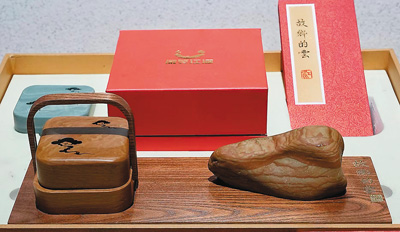
Photo shows a set of Songhua stone cultural and creative works. (People's Daily Online/Li Yang)
Currently, Jiangyuan district has nearly 200 rare stone businesses. About 2,000 people are engaged in the Songhua stone industry in the district. Over 300 kinds of products under eight categories have been developed, including original Songhua inkstone cultural products, collectibles, and tourist souvenirs.
Zhang Hongguo, a native of Jiangyuan district, is the general manager of the Xisong inkstone carving factory. His Songhua stone crafts have been sold to overseas markets. Zhang learned English, Korean, and Japanese to better promote Songhua stone culture abroad. His inkstone carving factory has been honored by Jilin Province.
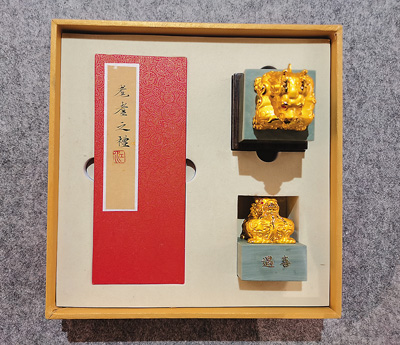
Photo shows a set of Songhua stone cultural and creative works. (People's Daily Online/Li Yang)
Songhua stone is gaining recognition among enthusiasts in countries like South Korea, Japan, and Russia, thanks to measures such as cultural exchange events, the Songhua stone culture and tourism festival, and the Songhua stone special exhibition of the China-Northeast Asia Expo, among others.
Li Jiangbo, Party chief of Jiangyuan district, emphasized the need for inheritance and innovation and advocated developing fashionable and practical Songhua stone cultural and creative products that are market-oriented and attract young people to make Songhua stone part of their daily lives.
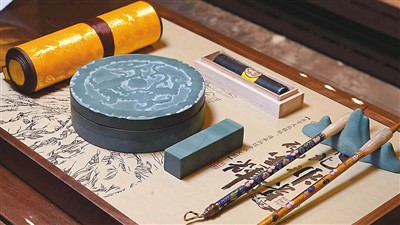
Photo shows a set of Songhua stone cultural and creative works. (Photo courtesy of the publicity department of the Communist Party of China Jiangyuan district committee)
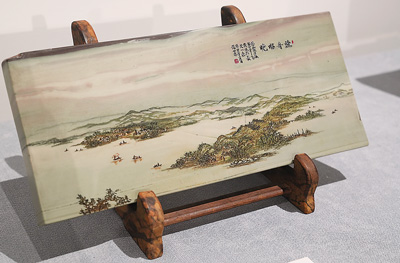
Photo shows a Songhua stone artwork. (People's Daily Online/Li Yang)
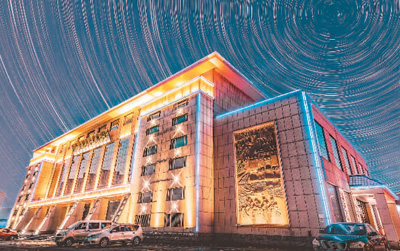
Photo shows the China Songhua Stone Museum in Jiangyuan district, Baishan city, northeast China's Jilin Province. (Photo courtesy of the publicity department of the Communist Party of China Jiangyuan district committee)
Photos
Related Stories
- China's ancient artworks in the international frame
- Chinese artworks exhibited at National Gallery of Thailand
- Shanghai's artwork and antiques market sees robust growth
- Craftsman transforms metal waste into artworks in N China's Shanxi
- Young woman becomes online hit by turning old objects into art works
- Villagers create artwork with grains
- Woman turns traditional Shandong pancakes into exquisite artwork
Copyright © 2024 People's Daily Online. All Rights Reserved.






